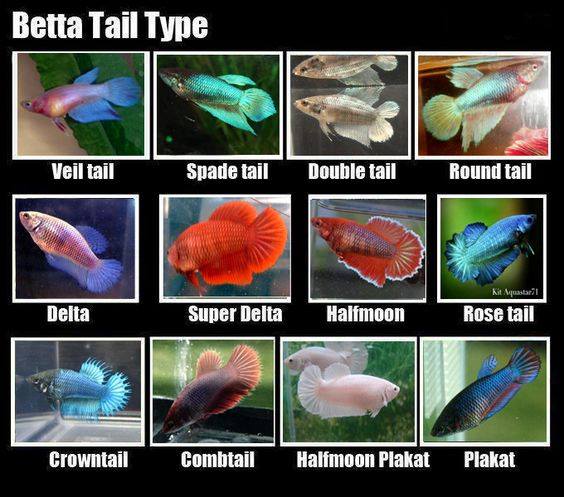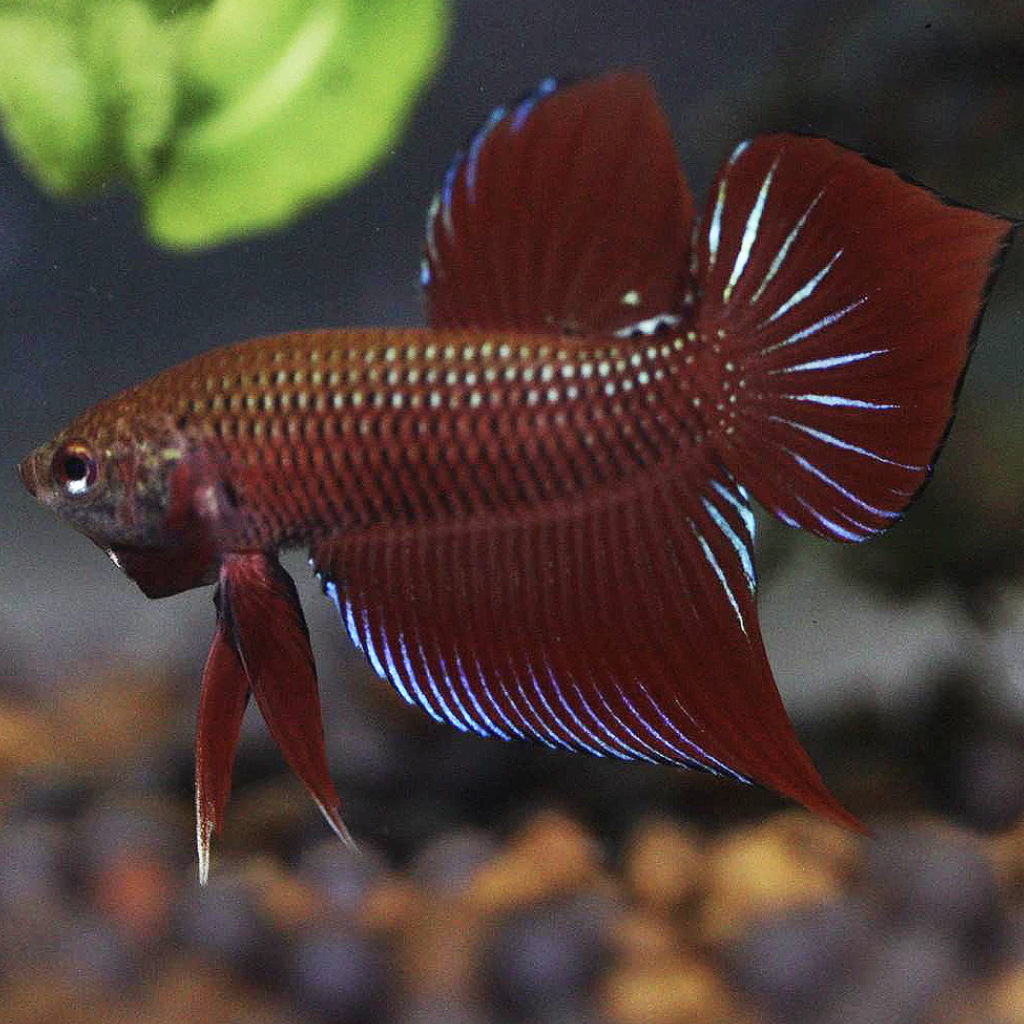Wild Betta Fish Care Guide 101: Food, Tank, Habitat, Breeding
Wild betta fish, with their striking colors and fascinating behaviors, are captivating enthusiasts worldwide. Wild bettas display a different beauty than their domesticated counterparts, bred for vibrant colors and long fins. This article dives into the unique world of wild bettas, outlining everything you need to know to provide them with a healthy and stimulating environment. From setting up the perfect tank to selecting the suitable tank mates and diet, we’ve got you covered.
Chapter 1: Betta Anatomy Basics
Click Here For My Favorite Book On Betta Fish Care For a Happy Fish
Originating from the tranquil rice paddies and warm, shallow waters of Southeast Asia, betta fish (Betta splendens) captivate enthusiasts with their extraordinary beauty and intriguing personalities. Known for their striking fins and array of colors, bettas possess a unique charm that has garnered a dedicated following around the globe.
Bettas are not only admired for their appearance but also for their remarkable adaptability and resilience. One of their most distinctive features is the labyrinth organ, a specialized part of their respiratory system that allows bettas to breathe atmospheric air directly from the water’s surface. However, the allure of keeping a betta fish goes beyond their ability to breathe air or their stunning looks. Bettas exhibit a wide range of behaviors that reflect their complex personalities. From the creation of intricate bubble nests by males as a part of their breeding ritual to their curious exploration of the aquarium, bettas offer endless fascination for their caretakers.
Betta Anatomy
Understanding the anatomy of a betta fish is crucial for recognizing their needs and identifying any health issues that may arise. Let’s explore the key anatomical features of these beautiful creatures:
- Fins: Bettas are renowned for their magnificent fins, with variations such as veiltail, crowntail, and halfmoon being especially popular among enthusiasts. Each fin serves a purpose, from the caudal (tail) fin used for propulsion to the pectoral fins for steering and braking.

Betta fin types
- Body: A betta’s streamlined body allows for efficient movement through water. It is typically elongated and can display a wide range of vibrant patterns and colors, which are often a sign of health and vitality.
- Gills and Labyrinth Organ: While bettas have gills like other fish, they also possess a labyrinth organ that allows bettas to breathe oxygen like land animals directly. This evolution enables them to survive in low-oxygen environments.
What Are The Types of Wild Betta Fish?
Click Here For How To Take Care of Betta Fish
Wild betta fish originate from dense jungles and rice paddies in Southeast Asia, thriving in shallow, slow-moving waters. The Betta splendens complex, known for its diversity, includes six distinct species, each with unique characteristics. Wild bettas are highly adaptable, exhibiting a wide range of colors and fin types, albeit less extravagant than the ornamental varieties found in pet stores.


Betta unimaculata complex

Betta coccina complex
- Veiltail: Characterized by long, flowing fins that drape like a veil. This is the most common type found in pet stores.
- Halfmoon: These bettas have a tail that spreads 180 degrees, resembling a half moon. Their fins are large and full.
- Crowntail: Known for their spikey tail and fin appearance, crowntail bettas have a striking, regal look.
- Plakat: Sporting a shorter body and fins, plakat bettas are closer in appearance to the wild Betta splendens. They are known for their agility and are less prone to fin damage.
Each type of betta has its own beauty and personality, making the selection process a personal journey to find the betta that speaks to you.
Selecting a Healthy Betta
Click here to learn the secret technique for acclimating a betta
When choosing a betta, it’s important to look for signs of good health:
- Active and Alert: Healthy bettas are curious and will often come to the front of their container to greet you.
- Bright, Even Coloring: Look for bettas with vibrant colors and clear patterns. Dull colors or irregular patches may indicate stress or illness.
- Smooth Fins and Body: Check for any tears, holes, or ragged edges in the fins, which could be signs of fin rot or damage. The body should be free from bumps or spots.
- Responsive to Stimuli: A healthy betta will react to your presence, often flaring their gills or spreading their fins.
Avoid bettas that are lethargic, have cloudy eyes, or show signs of bloating, as these can be indications of underlying health issues.
Chapter 2: How to care for a betta fish
Click here for the secrets to simple, successful betta fish care…
Bettas thrive in conditions that mimic their natural habitat, which means paying close attention to tank setup, water parameters, and decor. In this chapter, we’ll guide you through setting up the perfect home for your betta.
Betta Care Sheet
| Category | Details |
|---|---|
| Tank Size | Minimum 5 gallons |
| Water Parameters | 75°F to 80°F; pH: 6.5 to 7.5; Use water conditioner to remove contaminants |
| Filtration | Gentle filter to avoid strong currents; regular maintenance and 25% weekly water changes |
| Diet | High-quality pellets, supplemented with live or frozen foods like bloodworms or brine shrimp |
| Behavior | Males are territorial and aggressive; Not suitable to house with other males or flashy, finned fish |
| Tank Mates | Suitable with docile, bottom-feeders; avoid fin nippers and active fish |
| Substrate and Decorations | Smooth gravel or sand; use live or silk plants and hideouts for natural environment and stress reduction |
| Health Monitoring | Observe for signs of stress or disease; address issues promptly to prevent complications |
Betta Fish Tank Size Matters
One of the most common misconceptions about betta fish care is that they can live in small bowls or vases. However, these conditions are far from ideal and can lead to health and behavioral issues due to inadequate space, poor water quality, and lack of stimulation.
- Minimum Tank Size: A 5-gallon tank is the minimum recommended for a single betta fish. This size provides ample room for swimming, exploring, and establishing territories, all of which contribute to a betta’s well-being.
-
Do betta fish need a filter? Yes. Here’s why:
-
-
Waste Removal:
- Betta fish, like all fish, produce waste containing ammonia. Ammonia is highly toxic, and without a filter, it will quickly build up to dangerous levels.
- Filters house beneficial bacteria that break down ammonia into less harmful compounds (nitrites and then nitrates), maintaining a safer environment.
Water Quality:
- Filters help remove uneaten food, decaying plant matter, and other debris, keeping the water clear and preventing further ammonia buildup.
- Maintaining stable water quality is essential for Betta health and prevents stress-related diseases.
-
-
-

A Pondon 5-gallon rimless tank with built-in lighting and adjustable water pump filtration is a great idea if looking for an all-in-one solution
- Benefits of Larger Tank Setups: Larger tanks not only offer more space for your betta to thrive but also help maintain stable water conditions. They provide more options for aquascaping and can accommodate heaters and filters more effectively, creating a healthier environment for your betta.
Aquascaping for Bettas
Designing your betta’s tank is not just about aesthetics; it’s about creating a space that meets their natural needs for exploration and rest.
- Substrate: Options include sand, gravel, or a bare-bottom tank. Sand or fine gravel can be beneficial for plants and resembles the natural bottom of a betta’s habitat. Ensure the substrate is smooth to prevent fin damage.

- Live Plants: Incorporating live plants adds beauty to your tank, improves water quality, and provides hiding spots for your betta. Anubias, java fern, and moss balls are excellent choices as they do not require intense lighting and are easy to maintain.
- Secure Décor: When selecting tank decorations, select items with smooth edges to prevent fin tearing. Caves, smooth driftwood, and broad-leafed plants make excellent hiding places and resting spots. Avoid sharp plastic plants and decorations that could harm your betta.
Equipment Essentials
Proper equipment is key to maintaining an ideal environment for your betta, ensuring they remain healthy and stress-free.
- Heater: Bettas are tropical fish and require a consistent water temperature between 76-80°F (24-27°C). A solid aquarium heater with a thermostat will maintain the necessary temperature.
- Filter: Choose a filter with adjustable flow settings to keep the water clean while minimizing currents. Bettas do not thrive in strong currents, so a sponge filter or a filter with a flow rate suitable for small tanks is ideal.
- Lighting: If you have live plants, lighting will support their growth and contribute to a natural day/night cycle for your betta. LED aquarium lights with timers can simulate natural sunlight patterns, encouraging a healthy sleep cycle for your fish.
Creating the perfect environment for your betta involves more than just filling a tank with water. By considering the size of the tank, aquascaping, and essential equipment, you’re laying the foundation for a healthy, stimulating home that closely mimics their natural habitat. This ensures your betta’s health and happiness and makes your aquarium a beautiful, serene addition to your space.
Chapter 3: The Essence of Water
Click here to learn how to keep your betta as healthy as it is on day one
Water quality is paramount in the care of betta fish. It impacts their health, behavior, and lifespan more than any other factor in their environment. Bettas like a pH level between 6.5 – 7.5, slightly acidic to a neutral environment.
Water Chemistry 101
- pH: Betta fish thrive in water with a pH level close to neutral (7.0). Slight variations are tolerable (6.5 to 7.5), but abrupt changes can be harmful.
- Ammonia: Ammonia levels should always be at 0 ppm (parts per million). Ammonia is toxic and can quickly lead to health problems or death.
- Nitrite: Like ammonia, nitrite levels should also be kept at 0 ppm. Nitrites are harmful and can stress or kill your fish.
- Nitrate: Nitrates are less toxic but should be kept below 20 ppm to ensure a healthy environment. High levels indicate a need for a water change.
- Water Hardness: Betta fish can adapt to various water hardness levels, but moderate hardness is ideal.
Regular testing with a reliable aquarium water test kit will help you monitor these parameters and maintain a stable environment for your betta.
Making Tap Water Safe
Tap water often contains chlorine, chloramines, and heavy metals, which are safe for humans but toxic to fish. To make tap water safe for your betta:
- Dechlorinators/Water Conditioners: These products neutralize chlorine, chloramines, and bind heavy metals, making tap water safe.
- Aging Water: Some aquarists prefer to let tap water sit for 24-48 hours to allow chlorine to evaporate. However, this method does not remove chloramines, so a water conditioner is generally recommended.
The Nitrogen Cycle
The nitrogen cycle is a biological filtration process that converts ammonia which is toxic, into less harmful substances. Establishing a healthy nitrogen cycle in your tank involves:
- Beneficial Bacteria: These microorganisms break down ammonia into nitrites and then nitrites into nitrates.
- Cycling Your Tank: Before introducing your betta to the tank, it’s essential to cycle it. This process can take several weeks and involves adding ammonia sources to the tank to grow beneficial bacteria.
- Testing: Regularly test your water parameters during the cycling process to ensure levels of ammonia and nitrites drop to 0 ppm and nitrates remain low.
Water Changes
Even with a well-established nitrogen cycle, regular water changes are crucial:
- Frequency and Volume: For a 5-gallon tank, changing 10-20% of the water weekly is a good rule of thumb. The exact frequency and volume can vary based on tank size, filtration efficiency, and fish load.
- Procedure: Use a siphon to remove debris from the substrate while removing water. Replace it with treated water at the same temperature to prevent shocking your betta.
Chapter 4: What To Feed a Betta Fish
Click here to learn about the best food & diet for a betta
A proper diet is crucial for your betta’s health, coloration, and longevity. Understanding the nutritional needs of your betta will help you provide a balanced diet that supports their well-being. This chapter covers the biology of betta fish, quality food options, feeding portions and frequency, and treats.
Betta Biology and Diet
Bettas are carnivorous by nature, requiring a diet rich in protein to thrive. They eat insects, various larvae, and other small invertebrates. This natural diet is high in protein and low in carbohydrates, a nutritional balance that should be mimicked in captivity to ensure your betta’s health.
Quality Food Options
Offer a variety of high-quality foods. we’ve got a great article that talks more about betta food here.
- Pellets: Pellets formulated specifically for bettas are an excellent base for their diet, providing balanced nutrition. Look for pellets with high protein content and minimal fillers.
- Frozen and Freeze-Dried Foods: Frozen or freeze-dried foods like bloodworms, brine shrimp, and daphnia add variety to your betta’s diet and mimic their natural feeding habits. These should be given as supplements to pellets.
- Live Foods: Offering live foods such as wingless fruit flies or live brine shrimp can encourage natural hunting behaviors and provide enrichment. Ensure live foods are sourced from reputable suppliers to avoid introducing diseases.
Feeding Portions & Frequency
Overfeeding is a common problem in betta care, leading to health issues like obesity and water quality degradation. To prevent this:
- Portion Size: Feed an amount your betta can consume within two minutes. For pellets, this usually equates to 3-4 pellets, twice a day.
- Frequency: Feed your betta twice daily, ensuring not to overfeed. If you opt to feed a mix of pellets and frozen or live foods, adjust the portions accordingly to maintain a healthy diet balance.
Treats
Just like humans, bettas appreciate the occasional treat. However, treats should be given sparingly and not replace their regular diet.
- Treat Options: Suitable treats include live or frozen foods not regularly featured in their diet. These can provide nutritional variety and mental stimulation.
- Frequency of Treats: Treats should be given no more than once a week to avoid disrupting their nutritional balance.
Chapter 5: Betta Health, Fin Problems, Sickness
Click here for my favorite guidebook that walks through treating various betta health problems
Maintaining your betta fish’s health involves preventive care, recognizing signs of illness early, and knowing how to treat common ailments. This chapter outlines how to keep your betta healthy, identifies symptoms of common diseases, and provides guidance on when to seek veterinary help.
Sick Betta Fish Care
Understanding the symptoms and treatments for common betta diseases is crucial for any betta owner. Here are several ailments to watch for:
- Fin Rot: A bacterial infection that will cause the fins to fray and decay. It often results from poor water quality or fin damage. Treatment includes improving water conditions and considering antibacterial medications.
- Ich (White Spot Disease): Caused by a parasitic protozoan, ich presents as small, white spots on the fish’s body and fins. Raising the water temperature slightly and treating the water with ich medication can help eradicate the parasite.
- Velvet: A parasitic infection that gives the fish a velvety appearance due to tiny, rust-colored parasites. Treatment involves specific anti-parasitic medications and sometimes raising the aquarium’s temperature.
- Dropsy: Indicated by swelling of the body and protruding scales, dropsy is a symptom of kidney failure and is often fatal. Treatment can be challenging, focusing on improving water quality and possibly antibiotics, but prognosis is generally poor.
Prevention is Key
The adage “prevention is better than cure” is particularly true in betta fish care. Here’s how to prevent illnesses:
- Maintain Water Quality: Regular water changes and testing to keep ammonia, nitrites, and nitrate levels in check are fundamental.
- Proper Nutrition: A balanced diet prevents nutritional deficiencies and supports a healthy immune system.
- Stress Reduction: Minimize stress by providing an adequately sized tank, proper tank mates, hiding places, and avoiding overhandling.
If you need help diagnosing a sick betta, click here for our disease and ailments guide.
When to Seek Veterinarian Help
Sometimes, despite your best efforts, your betta may fall ill with a condition you’re not equipped to handle. Signs that you should consult a veterinarian include:
- Persistent health issues that don’t improve with initial treatment.
- Symptoms of more severe diseases, such as dropsy.
- Uncertainty about the diagnosis or treatment of your betta’s condition.
Veterinarians specializing in aquatic medicine can offer diagnoses, prescribe medications, and provide care instructions not available over the counter.
Stress Reduction
Reducing stress is crucial for preventing illness and maintaining your betta’s well-being. Stress in bettas can be minimized by:
- Ensuring adequate space for swimming and territories.
- Providing a varied environment with plants and decor for exploration and hiding.
- Keeping water parameters within ideal ranges and ensuring a stable environment.
- Choosing compatible tank mates to avoid aggressive interactions.
Chapter 6: Betta Behavior
Click here to learn more about betta behavior from a researcher
Understanding betta fish behavior is key to ensuring their well-being and providing an enriching environment. This chapter explores typical behaviors of betta fish, signs of contentment versus distress, and how to provide mental stimulation through betta enrichment.
Beyond the Betta Flare
Bettas are known for their aggressive display, the “flare,” where they puff out their gills and spread their fins to appear more formidable. This behavior is natural and can be a sign of territorial assertion or a response to seeing their reflection. However, betta behavior extends far beyond this display:
- Bubble Nests: Male bettas create bubble nests at the water surface when they are ready to breed, using saliva to create bubbles. This behavior is a sign of good health and instinctual readiness for reproduction.
- Exploration: Bettas are curious fish that enjoy exploring their environment. Providing a variety of plants, decorations, and hiding spots encourages this natural behavior.
- Resting: Bettas will often rest on leaves or in sheltered spots within the tank. This is normal behavior, and providing broad-leafed plants or betta hammocks can create ideal resting places.
Recognizing Signs of Contentment vs. Distress
Click here if your betta is under stress or not looking as vibrant as it once was
A content and healthy betta is active, has a good appetite, and displays vibrant colors. In contrast, signs of distress or illness include:
- Lethargy: Spending excessive time at the bottom of the tank or showing little interest in their surroundings.
- Faded Colors: Dull or fading colors can be a sign of stress or poor health.
- Clamped Fins: Fins held close to the body rather than spread out might indicate stress or discomfort.
Understanding these behaviors and signs can help you gauge the health and happiness of your betta.
Betta Enrichment
Here are some enrichment ideas:
- Mirror Training: Briefly placing a mirror outside the tank can stimulate your betta by allowing them to flare. Limit mirror time to a few minutes per day to avoid stress.
- Changing the Environment: Rearranging the tank’s layout or introducing new plants and decorations can provide new areas for your betta to explore.
- Interactive Toys: Floating toys or ping-pong balls can engage your betta’s curiosity and playfulness. Ensure toys are smooth and safe for aquarium use.
- Feeding Variety: Incorporating different types of food and feeding methods, like live food or food puzzles, can stimulate your betta’s natural hunting behaviors.
Chapter 7: Tank Mates and Considerations
Click here to read this other article before you introduce betta tank mates
Betta fish are known for their territorial behavior, especially males, which can complicate community tank living. However, with careful selection and proper tank management, bettas can coexist with other species. This chapter outlines considerations for creating a harmonious tank, suggests compatible tank mates, addresses the sorority debate, and provides guidelines for introducing new fish.
The Sorority Debate
A betta sorority refers to keeping a group of female bettas together in one tank. While some aquarists successfully maintain betta sororities, they require careful planning and management:
- Tank Size: A larger tank (20 gallons or more) is essential to provide enough space for each betta to establish her territory.
- Hiding Places: Abundant plants and decorations that create barriers and hiding spots can reduce aggression by breaking the line of sight.
- Group Size: A group of at least 5-6 females is recommended to prevent any single betta from becoming the target of aggression.
Despite these measures, betta sororities can still be unpredictable, and constant monitoring is necessary to mitigate stress and aggression.
Compatible Tank Mates
When considering tank mates for a single betta or a community tank, look for peaceful, non-territorial species that do not resemble bettas. Suitable companions may include:
- Corydoras Catfish: Small, peaceful bottom-dwellers that keep to themselves.
- Snails and Shrimp: Invertebrates like Nerite snails and Amano or Cherry shrimp are generally safe with bettas, offering the added benefit of algae control.
- Small Schooling Fish: Species like Harlequin Rasboras or Ember Tetras are fast enough to avoid bettas and do not provoke aggression.
Avoid aggressive fish, fin-nippers, or any large species that might stress or harm your betta.
The ‘No-Go’ List
Certain fish should never be housed with bettas due to their aggressive nature or similar appearance, which can trigger territorial behavior. These include:
- Other Bettas (especially males)
- Aggressive barbs or larger cichlids
- Fin-nipping species like some Tetras and Barbs
Quarantine First
Introducing new tank mates to your betta’s environment should be done with care to prevent the spread of disease:
- Quarantine Period: New additions should be kept in a separate quarantine tank for at least 2-4 weeks. This time allows observation the fish for any signs of illness before introducing them to the main tank.
- Acclimation: Gradually acclimate new fish to the main tank’s water parameters to reduce stress and shock.
Chapter 8: Responsible Breeding
Click here to learn more about the breeding process
Breeding betta fish requires a deep understanding of their needs, genetics, and the commitment involved in raising fry (baby fish). This chapter discusses whether breeding is right for you, introduces basic genetic principles for bettas, and outlines the steps to prepare for and care for betta fry.
Is it Right for You?
Before deciding to breed your bettas, consider the following:
- Commitment: Breeding and raising bettas is time-consuming and can span several months from preparing for breeding to finding homes for the fry.
- Resources: Ensure you have the necessary space, equipment, and budget for separate tanks, specialized food for fry, and potential veterinary care.
- Ethical Considerations: The betta fish market is already saturated, and breeding should be undertaken responsibly, with a plan for rehoming fry to avoid contributing to overpopulation.
Genetics: Basics for Bettas
Understanding basic genetics is crucial for breeding bettas, especially if aiming for specific colors or tail types. Here are some fundamentals:
- Dominant and Recessive Genes: Some traits, like certain colors, are dominant, meaning they’re more likely to appear in offspring. Recessive traits may be hidden unless both parents carry the gene.
- Tail Types and Color Patterns: Breeding bettas with the intention of producing specific tail types or color patterns requires knowledge of the genetic compatibility and dominance of these traits.
Setting Up for Breeding
To breed bettas, you’ll need a proper setup and to follow specific steps:
- Breeding Tank: A separate, smaller tank (5-10 gallons) with a heater and gentle filtration is ideal. The water should be shallow, about 4-6 inches, to facilitate spawning and ensure the male can care for the eggs.
- Conditioning: Prior to breeding, condition the male and female with high-quality food to encourage spawning behavior.
- Introduction: Introduce the female to the breeding tank with a barrier separating her from the male to allow them to see each other without physical contact, encouraging courtship behaviors.
Caring for Fry
After successful spawning, caring for the fry requires attention and specialized care:
- First Foods: Betta fry require very small, high-protein foods, such as infusoria or commercially available liquid fry food, graduating to baby brine shrimp as they grow.
- Water Quality: Maintain pristine water conditions with gentle, regular water changes. Be careful not to disturb the fry.
- Growth and Separation: As fry grow, monitor for aggression and be prepared to separate them into individual containers or tanks to prevent harm.
Conclusion: The Joy of Betta Keeping
Embarking on the journey of betta keeps opening up a world of beauty, learning, and fulfillment. Through the chapters of this guide, we’ve explored the essentials of betta care, from setting up the perfect environment and understanding their dietary needs to recognizing health issues and fostering a harmonious community tank. Each aspect of betta care we’ve discussed is a step towards ensuring a happy, healthy life for these vibrant creatures.
Bettas captivate us with vivid colors, elegant fins, and dynamic personalities. However, it’s important to remember that betta-keeping is not just about enjoying their beauty. It’s a commitment to providing the best possible care, understanding their needs, and making informed decisions prioritizing their well-being.
Reflecting on Responsibility
Responsible betta-keeping means continuous learning and adaptation. It involves staying informed about the latest care practices, observing your betta’s behavior and health, and making necessary adjustments. The joy of betta keeping comes with creating a nurturing environment that closely mimics their natural habitat, ensuring they thrive under your care.
Embracing the Community
The betta-keeping community is a valuable resource for support, advice, and shared experiences. Engaging with fellow enthusiasts can enhance your knowledge, provide solutions to common challenges, and deepen your enjoyment of the hobby. Whether through online forums, social media groups, or local aquarium clubs, becoming part of the betta community enriches the experience for you and your aquatic companion.
Continuing the Journey
The journey of betta keeping is ongoing, presenting new opportunities to learn and grow each day. As you gain experience, you might explore advanced topics such as aquascaping, breeding, or even participating in betta shows. Whatever path you choose, the well-being of your betta remains the highest priority.
Final Thoughts
The rewards of betta keeping extend beyond the beauty and elegance of the fish themselves. They teach us about the fragility and complexity of aquatic ecosystems, the importance of responsible pet ownership, and the joy of nurturing life. As you continue on this journey, remember that the care you provide makes a profound difference in the life of your betta. Embrace the challenges and rewards that come with betta keeping, and enjoy the beautiful, serene world you create for your aquatic friend.


- Care instructions for betta fish
- Tank & equipment, water chemistry & maintenance tips
- Betta basics, diet & food, health & behavior






















